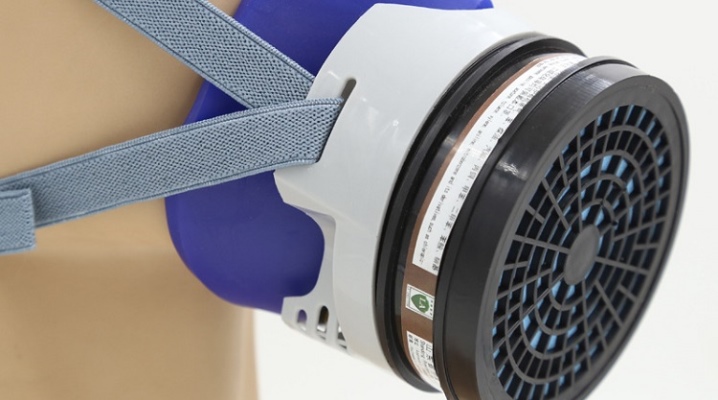All About Charcoal Respirators

Safety measures are a very important thing both in the household and in the workplace. Of course, the protection of the respiratory organs also plays a fairly large role. And in order for it to be performed correctly, you should familiarize yourself with information about charcoal respirators, about their real possibilities.


Description
The very idea of creating a device that would interfere with the effects of harmful substances on the respiratory system has been around for several centuries. WITHThe earliest prototypes date back to the 16th century. And some experts believe that it all started even earlier. The first practically working constructions of respiratory protection appeared at the end of the 18th century. Initially, it took a long time to figure out the filter, or rather to find its optimal performance.
And only in the second half of the 19th century it became clear that the best option is precisely carbon respirator. A design similar to modern designs appeared in the USA in 1879.although a number of experts dispute this. Either way, respirators are simple and convenient respiratory protection devices.
They help to avoid exposure to aerosol suspensions, dust, even some gases. But you cannot count on protection from highly toxic substances.

Respirators are more comfortable than gas masks due to their lower breathing resistance, and therefore more popular. Such respiratory protection can be used:
- in a wide variety of industries;
- in military affairs;
- in the mining industry;
- on construction;
- in energy;
- during various rescue operations.

Device and principle of operation
The respirator is relatively simple.... The face element is executed in the format masks or half mask. Additionally provides filter part... In the simplest version, we are talking about cotton-gauze construction, in which the half mask acts as a filter. The downside is that such a device does not help with strong dust, as well as with the appearance of even small amounts of gaseous toxins.
More advanced performance involves the use of interchangeable filters... A mask covering the face in whole or in part is provided. Air is “supplied” by breathing valves. The type of filters is determined by the purpose and type of protective equipment. Sometimes added glass overlay on the eyes.


Where is it applied?
Respirators are used when the air contains a lot of dust or smoke. On production they are needed to compensate for the effects of emissions of harmful substances, the formation of vapors. Houses A charcoal respirator is used when you need to paint something, use pesticides, insecticides, and disinfect. Medical workers and rescuers with the help of such devices, they prevent contact with pathogenic organisms, toxins.
Most often, respirators are used in:
- metallurgy;
- food industry;
- chemical industry;
- production of building materials;
- extinguishing fires;
- elimination of accidents.

What are they?
Reusable RPE... They are designed for permanent or systematic stay in places with heavy pollution. Filters can be replaced as needed. Can also be used immediately several modifications of filters, which allow you to protect yourself from a wide range of harmful factors. For short intermittent use, it is best to buy a disposable device.It is inexpensive, but very effective.
The execution of the front part is also important. Half masks are more flexible than full respirator masks. They can move involuntarily even when talking.
The shift is even more possible with active physical work, with a constant change of positions.



How to choose?
The most important parameter is compliance with the types of threats. Aerosol filters help protect against fumes from powder and water-based paints. But if sprayers are to be used, the respirator must have additional protection against organic vapors. It is very important to pay attention to filter marking.
So, A1P1D prevents the action:
- toluene;
- aniline;
- benzene;
- phenol;
- dust suspensions;
- smoke and fog.
B1P1D protects against inorganic gases and various vapors. But it will not save you from aerosols and carbon monoxide. E1P1D stops the action of acidic gaseous substances and dust suspensions.


K1P1D will help to be in the atmosphere of ammonia, derivatives of substances, as well as in various suspensions and mists. For long-term work, you need to use a full mask, which also reliably protects the organs of vision.
It should be noted that individual series of protective equipment were developed for:
- welders;
- woodworking industry;
- cement plants;
- agricultural work;
- manipulations with glass wool;
- work in particularly difficult conditions (with forced air pumping).

Features of storage and care
Even the best RPEs won't work if used incorrectly. Respirators should be rinsed and disinfected periodically. Elastomeric models require careful maintenance according to the instructions. Before wet cleaning, remove filters, intercoms, valves, hoses and other parts. After washing, the device must be wiped and dried.
Possible storage conditions:
- packaged;
- otherwise with preservation of the initial form;
- strictly in one layer;
- ideally in a plastic bag or bag.


For information on how to clean the carbon filters of a 3M respirator, see the next video.













The comment was sent successfully.